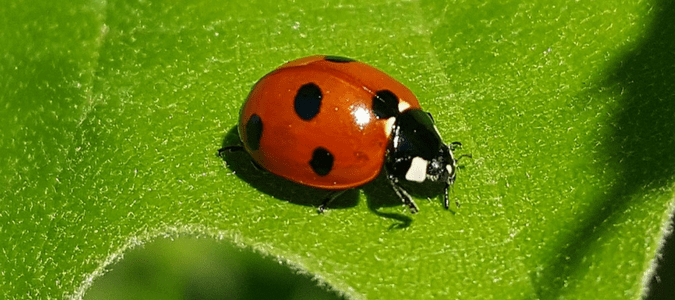Keeping your grass, plants and trees healthy and well-maintained can be a challenge. First, you have to have the time to dedicate to your lawn. You also need to make sure you have the right equipment and that it is all in working order. Finally, you need the expertise to know which types of plants work best in which environments, how often to water and how to spot signs of lawn pests and diseases. For homeowners in southern states, the warm climate, lack of rainfall and intense sun make it even more difficult to care for your outdoor spaces.
ABC’s Ultimate Lawn Care Guide
ABC Home & Commercial Services is dedicated to making homeowners’ lives easier. Our team of lawn care technicians, landscaping experts, pest control pros and sprinkler system specialists have compiled their best advice and tips into the Ultimate Lawn Care Guide. This 8-page downloadable PDF resource includes sections on:
- Lawn Care Seasonal Calendar
- What Kind of Grass is Best For My Lawn?
- All You Need to Know About Common Lawn Pests
- Watering Dos and Don’ts
- Six Ways to Enhance Your Curb Appeal
- Plants With a Purpose
- Beneficial Bugs
Download our Ultimate Lawn Care Guide to begin transforming your yard into an inviting, relaxing and beautiful destination for the entire family to enjoy. To see our lawn care tips and advice online, keep reading!
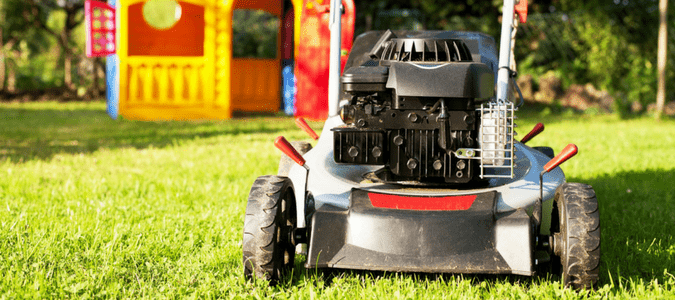
Lawn Care Seasonal Calendar
Taking care of your yard is less daunting when you do a little bit each season. Here’s a printable checklist to help you keep up with lawn care maintenance tasks.
Winter
Check all lawn equipment (mowers, edgers, blowers, shears, gloves, etc.) to make sure it is all in working order.
Remove dead growth and leaves and prune trees to remove thatch and encourage new growth.
Inspect your yard for signs of diseases or pests.
Consider having your lawn’s pH tested to determine which nutrients your soil needs.
Begin planning for any landscape enhancements you plan to make over the upcoming year.
Spring
Once your grass starts to grow, begin mowing. Consider leaving clippings on your lawn, unless you see signs of a lawn disease.
Perform any needed maintenance on sprinklers to ensure they can nourish your lawn in the coming months.
Treat for weeds with a pre-emergent herbicide or corn gluten if you tend to have problems later on in the year.
Add new plants to your landscape to replace any which did not survive the winter months.
Begin applying fertilizer to your lawn as temperatures climb, and continue to feed your grass throughout the summer months.
Apply a layer of mulch to beds to help plants retain moisture.
Begin a watering schedule if you stopped watering regularly during the winter months.
Summer
Aerate your soil to avoid soil compaction and to allow water and nutrients to reach plant root systems.
Apply post-emergent herbicides when grass is actively growing and weeds begin to appear to control further growth.
Edge to keep your yard neat and tidy.
Remove weeds, as needed.
Inspect your yard for signs of grubs and chinch bugs and apply insecticides as needed.
Water your grass deeply to ensure moisture reaches the roots.
Fall
Reseed grass now to fill in bare spots in your lawn from the summer months.
Add any new trees and shrubs to your landscape to allow them to take root before temperatures drop.
In the early part of October, apply fertilizer if grass looks unhealthy.
Rake leaves and clear other debris to reduce pest hiding spots.
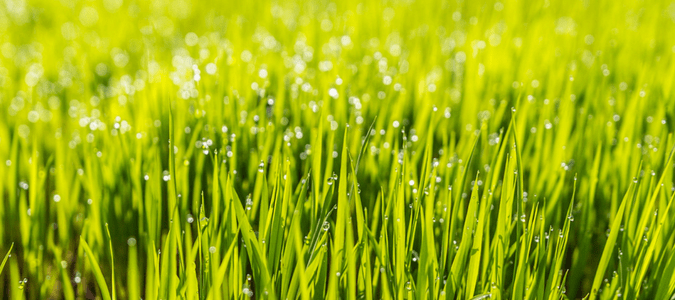
What Kind of Grass is Best for My Lawn?
In warm-weather climates, keeping your lawn green and vibrant year-round can be a tall order. Learn about which types of grass do best under which conditions.
St. Augustine
St. Augustine grass varieties are popular for lawns across the country. These grasses prefer full sun, but tolerate dappled sun. They have a low traffic tolerance and can tolerate a range of weather conditions. These varieties are prone to pests and disease and have high maintenance and water requirements.
Zoysia
Zoysia grasses have a fair shade tolerance and traffic tolerance. These varieties go dormant during drought conditions and rebound after rainfall. Zoysia has a moderate level of pest and disease resistance and thatch should be removed every few years. This type of grass responds best with a reel mower.
Buffalo Grass
Buffalo grass prefers full sun and doesn’t do well in shady conditions. These varieties have both a lower traffic tolerance and a low weather tolerance. Buffalo grass goes dormant in the early fall or during drought conditions and requires almost no water under those conditions. These grasses have low maintenance requirements and look best kept between four and five inches high.
Bermuda Grass
Like Buffalo Grass, Bermuda Grass prefers full sun and has a poor shade tolerance. Traffic and weather tolerance are high, and these grasses require almost no water when dormant. Pest and disease resistance and maintenance requirements are moderate. Bermuda grass gets thicker with more frequent mowing using a reel mower and irrigation.
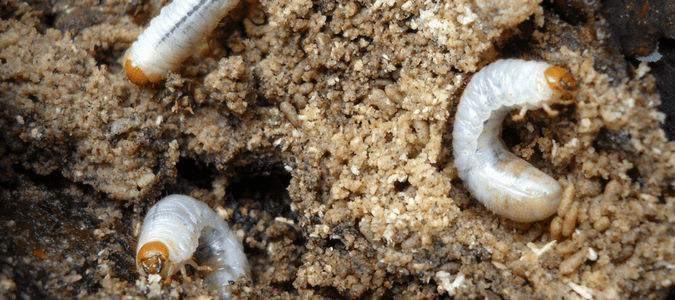
All You Need to Know About Common Lawn Pests
Learn about the most common lawn pests, how to know if they are in your yard and how to get rid of them.
Southern Chinch Bugs (Blissus insularis)
Chinch bugs are the top pests for St. Augustine grass, although they can also feed on other grass species, such as Zoysia and Bermuda grass. These insects are small and slender with white wings with distinctive black triangular marks.
Signs You Have Chinch Bugs
You may spot large numbers of live insects which are visible when you part the grass, irregular patches of dead grass surrounded by a perimeter of dead grass or damage which resembles what you might see on a drought-stricken yard.
How to Manage and Prevent Chinch Bugs
To control chinch bugs and prevent future infestations, keep lawn thatch to a minimum with regular mowing, aeration and top-dressing; avoid applying excessive fertilizer; lower the amount of applied nitrogen in turfgrass; ensure grass doesn’t receive too much or too little moisture; utilize predatory insects, including big-eyed bugs, minute pirate bugs and ants and consider applying insecticide with spot treatments to prevent further damage.
White Grubs
White grubs are the larval stage of the insects more commonly known as June bugs. Several species of white grubs cause significant damage to Bermuda grass, Zoysia, St. Augustine and Buffalo grass roots and underground plant parts, particularly during the summer and fall months. These soft, C-shaped, creamy-white creatures have three pairs of legs near their heads.
Signs You Have Grubs
You may have grubs if you see irregularly-shaped brown, dead patches of grass which never turn green; an influx of birds, skunks, armadillos, raccoons or moles which may tear up your yard in search of larvae to eat; weakened grass root system and areas which are more vulnerable to weeds; spongy turf; severely damaged turf can be lifted up by hand or rolled like a carpet; damage to nearby yards may indicate you will have a problem soon from migrating insects and small mounds of soil on your lawn’s surface which may indicate daytime resting sites.
How to Manage and Prevent Grubs
To control grubs and prevent future infestations, consider adding beneficial nematodes to attack white grubs and other insects in your soil; walking across your grass with spiked sandals to aerate your turf;
applying pesticides when grubs first hatch in mid- to late summer and into early fall, as this is when the grubs do the most damage and treating your grass with preventative products along with water to help move pesticides down toward the soil and encourage grubs to move towards surface.
Aphids
These tiny insects can infest a single plant, attacking new growth, eating sap and leaving a waste residue which can stimulate fungal growth and block sunlight. Aphids are very small—only 1/16” to ⅛”—usually green. Despite their size, aphids are considered among the most destructive insect pests to cultivated plants.
Signs You Have Aphids
If you wonder if you have aphids, look for misshapen, curling, damaged or yellowed plant leaves; the presence of the aphids themselves on the underside of leaves; a sticky, sugary liquid which may attract other insects, such as ants, which feed off this aphid waste product and misshapen flowers or fruit that aphids have fed on.
How to Manage and Prevent Aphids
How help manage aphids and prevent future infestations, introduce beneficial bugs, such as ladybugs and lacewings; keep ants from protecting the aphids from predators with sticky barriers; spray infested plants with water from a high-pressure hose to dislodge the aphids; use specially-formulated soaps and horticultural oils to control the spread of the pests and if possible, cover vegetables with row covers to protect crops while allowing sunlight, air and water to get in.
Caterpillars
Several types of caterpillars, including the armyworm, cutworm and sod webworm eat foliage when in the larval stage. Gardeners who incorporate butterfly-attracting plants can expect to see some caterpillar damage in their landscapes. Caterpillar species vary in color and size and are most prevalent in spring and fall before they turn into butterflies and moths.
Signs You Have Caterpillars
If you wonder if caterpillars are feeding on your plants, look for ragged edges of blades of grass; “windowpane” leaves with the veins intact but the rest of the tissue gone and silk webbing and frass debris on turf.
How To Manage and Prevent Caterpillars
If you’d like to manage existing caterpillars and prevent more from entering your yard, do not treat caterpillars on trees, as infestations are common and do not harm trees unless they are already stressed.
Inspect both sides of plant leaves once a week for feeding damage, caterpillars, eggs or larvae. Remove weeds which can be alternate hosts for caterpillars. Handpick caterpillars or eggs while wearing gloves and place them into a bucket of soapy water. Put row covers over plants to prevent moths from laying eggs on plants. Dislodge small caterpillars with water from a high-pressure hose or with a broom. Reduce pesticide use so your yard is friendly to natural enemies of caterpillars, such as paper wasps and parasitic flies and wasps (which do not sting or bite humans). Use low-impact, plant-based insecticides applied while caterpillars are still young, before feeding damage occurs.
Grasshoppers
Although grasshoppers tend to be more prevalent in rural communities or less disturbed areas, these insects occasionally make their way into our lawns, where they can feast on ornamental landscapes. Grasshoppers are medium to large insects with two sets of wings and long hind legs.
Signs You Have Grasshoppers
To determine if you have grasshoppers, check for holes in plant tissue, dark droppings on plants and misshapen fruit.
How to Manage and Preventing Caterpillars
Keep in mind that grasshopper management is difficult during outbreak years. Parasitic nematodes, yellow jackets and birds are natural predators and can be attracted by the incorporation of certain flowers into your landscape. Residual insecticides can protect your more valuable plants and floating row covers can protect vegetables. Substitute plants grasshoppers do not prefer, such as beautyberry, crepe myrtle, dwarf yaupon, lantana, rock rose and Turk’s cap for existing plants in your landscape.
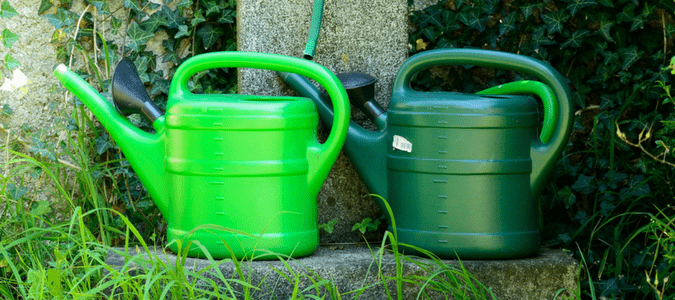
Watering Dos and Don’ts
Water is a key ingredient in keeping your outdoor spaces thriving. Follow these dos and don’ts to keep your lawn well-hydrated.
Do:
- Water only when your grass shows symptoms of stress, such as having a blue-gray tint, wilting or curling leaves or footprints which remain on the grass longer than normal.
- Water deeply by letting the soil to a depth of six inches to that moisture makes its way to your plants’ root systems.
- Water your lawn more after applying fertilizers or putting in new plants or trees, since freshly-fertilized lawns and new plants absorb more water.
- Pay attention to run-off onto your driveway and street which may indicate that you need to adjust your sprinklers, that you have a leak or that you are watering too much.
- Choose native plants and grasses which are adapted to warmer climates and require less frequent watering.
Don’t:
- Water at night, since excessive moisture can lead to development of fungus and disease, or in the middle of the day, since you will lose moisture to evaporation. The ideal time to water is early in the morning.
- Cut your grass too short, as this will compromise your lawn’s ability to draw and retain moisture.
Skip on mulch during the springtime. Applying mulch on bare ground will help your lawn retain moisture and prevent runoff when watering. - Assume all the plant species in your lawn should be watered on the same schedule. Monitor your lawn to see how different plants fare during different seasons and adjust your irrigation schedule accordingly.
- Water after a heavy rainfall. Make sure your sprinkler system’s rain gauge is accurate so you aren’t watering saturated soil, which can lead to runoff.
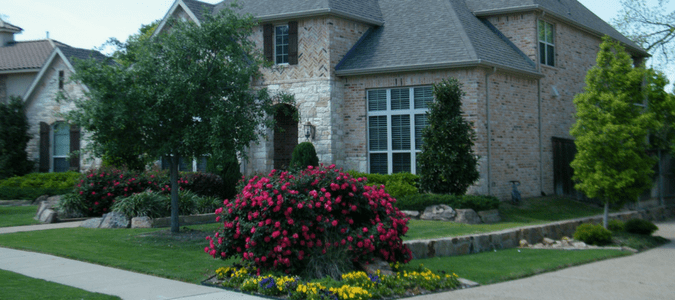
Six Ways to Enhance Your Curb Appeal
Your home’s exterior can make a big impression. While homeowners can easily spend thousands of dollars making major updates, small projects can go a long way to improving your curb appeal. Try these tips to give your property an aesthetic upgrade:
Give your driveway some TLC
Pressure wash the driveway to get rid of any oil stains or excess dirt. Pull weeds and repair any cracks that may have happened over the years.
Change the look of your front door
The entryway can truly be a game changer. Shop around and find a new style or refinish your wooden door to catch the eye of everyone who passes by.
Paint your trim and shutters
Whether it’s repainting your existing colors or opting for something bold and new, fresh paint offers an instant makeover.
Switch out your house numbers
There are a variety of options to choose from regarding size, font and color. It’s a small change that can make a huge difference.
Light the way
Adding lights to your walkway or near your plant beds ensures your home looks good even after the sun goes down.
Update your landscaping
It could be time to change the design or add a pop of color to your front yard with new flowers or plants. Adding a border around trees or gardens is a nice way to accent the style of your home.
Take on one of these tasks to add a little sparkle to your house or tackle all six to make your house look like new. Whatever you choose, we understand that sometimes, a little help goes a long way which is why ABC is here to lend a helping hand when you need it.
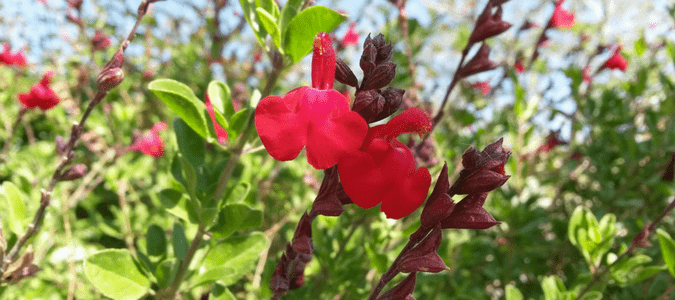
Plants With a Purpose
Certain plants do better under different conditions. Learn more about what plants to use in different situations, whether you are trying to deter deer, keep mosquitoes away or keep your landscape thriving in shade or full sun.
If you want to keep mosquitoes away, try these plants:
- Citronella
- Lemongrass
- Marigold
- Lavender
If you want to keep deer from munching on your landscaping, try these deer resistant plants:
- Sage
- Thyme
- Rosemary
- Oleander
If you want plants that will thrive in the shade, try these varieties:
- Columbine
- Purple Heart
- Shrimp Plant
- Autumn Sage
If you need plants capable of surviving in sunny spots, try:
- Shasta Daisies
- Purple Coneflowers
- Succulents
- Verbena
Beneficial Bugs
Not all bugs are bad. These insects can benefit your yard and plants:
Ground Beetles (Coleoptera)
There are over 3,000 different types of ground beetles. Both adults and larvae can be beneficial in pest control and weed management. They feed at night and range from 1/8 to 1 ½ inches long in length.
Green Lacewings (Chrysoperla)
Adult lacewings are pale green, about one-inch long with four wings and shiny, golden eyes. In the larval stage, lacewings feed largely number of small insects and insect eggs, but as adults they only feed on nectar.
Ladybugs (Coccinellidae)
These tiny, red beetles have small black spots on their wings and help consume aphids, mealybugs and other pests that damage your garden. They also lay their eggs among the aphids so that newborn larvae can feed on prey.
Predatory Stinkbugs (Linnaeus)
They are easily distinguishable from other stink bugs by the large red spots on their black bodies. Predatory stink bugs measure anywhere from 12-17 millimeters in length, with the females being larger. These stinkbugs prey on plant-damaging bugs; they feed on more than 100 species of insects and will attack pests larger than themselves by sucking the body fluids of their prey with a needle-like beak.
Spined Soldier Bug (Podisus)
Adults are 11-15 millimeters in length and are mottled brown in color and have a prominent spine on each shoulder. They prey on arthropods and other insect larvae.
Garden Spiders (Agriope)
Garden spiders are black and yellow. Females can vary from 19-28mm in length while males are much smaller only growing from 5-9mm in length. They produce venom to immobilize their prey and keep flying insects like bees, flies and others that are caught in their web. They are typically not aggressive toward humans but if you get bitten, it is no more painful than a bee sting. Their lifespan is usually about a year and usually die in the winter.
Dragonfly (Odonate)
Dragonflies come in many sizes and can grow up to four inches in length. They are large, heavy-bodied insects that prey on midges, mosquitoes, moths and other flying insects that may invade your garden. Sometimes they even eat spiders! The larvae, or nymphs, live in water and can catch and eat small fish such as bloodworms. Most dragonflies live about six months but in some cases, larger dragonflies live up to six or seven years. They do not bite and can even be held in your hand.
Honeybees (Hymenoptera)
Honeybees are brightly-colored with black and yellow stripes which act as a defense mechanism to warn predators to stay away. They can live up to 24 days. The honeybee’s wings are extremely fast which is what creates the “buzzing” noise when they fly by. Honeybees can fly up to six miles at 15 mph. These insects are beneficial to your garden because they keep your flowers in bloom by pollinating your plants. Not only are honeybees beneficial to your garden but also to the environment as a whole. Bees are the only insect that produces food eaten by humans.
ABC Helps Homeowners Enjoy Their Outdoor Spaces
Knowing how to maintain and improve your outdoor spaces is the first step to making changes in your yard. When you don’t have the time, expertise or tools to do the work yourself, trust the professionals at ABC Home & Commercial Services to get the job done. Our lawn care experts can handle seasonal clean-ups, enhance your existing landscaping, create a new design entirely and help protect your plants against pests. With ABC’s help, your lawn will be the envy of the neighborhood.

